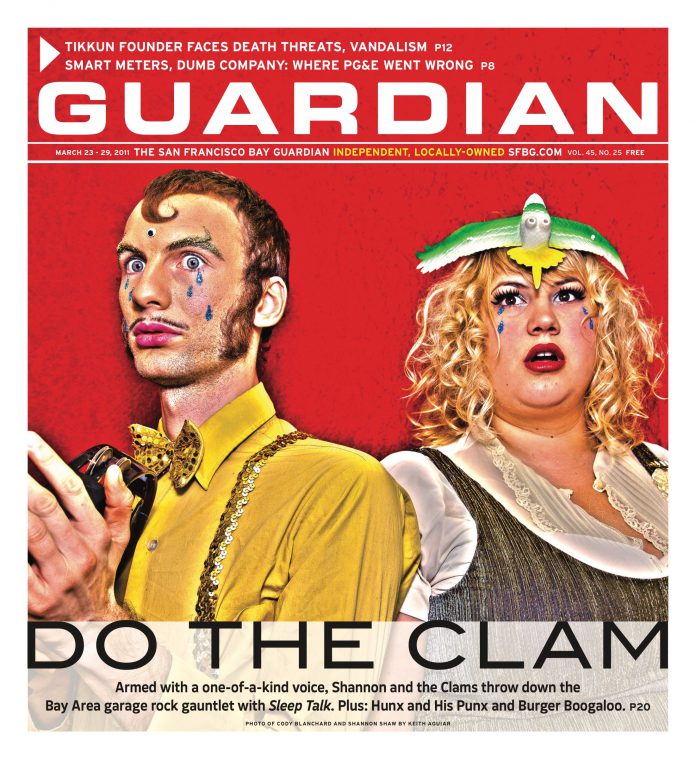paulr@sfbg.com
DINE Charanga, which will celebrate its 13th birthday this summer (and restaurant years are Hobbesian, i.e. nasty, brutish, and short), is not only a survivor but a pioneer in what is pretty routinely called today “pan-Latin” or “nuevo Latino” cooking. When chef/owner Gabriela Salas opened the restaurant in 1998, Fresca was a single small joint in West Portal selling Peruvian roast chicken and burritos and Limon didn’t exist. These days Fresca and Limon are a pair of colossi bestriding the city. But Charanga abides, having managed to remain fresh without changing itself much.
The restaurant offers a faceful of iron gate to the street. Behind is a shallow patio set with a couple of tables for those with a taste for al fresco or who fear the noise of the dining room. For, yes, Charanga is pretty noisy, as befits a place named after a kind of Cuban dance-music ensemble. On one chilly evening, we were chatted up by a man strumming a short-necked, 12-string Cuban guitar at the next table. He was not named Leo Kottke, and, noise-wise, he wasn’t the half of it. There was loud thump-thump music blaring from the sound system, and the crowd (which dramatically swelled by mid-evening) was young and boisterous. The ceilings of the deep, narrow space are high, but not enough to overcome the echo-chamber effect created by the tile floors.
But enough carping. The interior is nice-looking in a relaxed way, and the food is wonderful . This is not surprising, given the chef’s pedigree, and, with roots in the Caribbean islands, the cooking is different enough from the that of the Peruvian-inflected colossi to make it a worthy variation on what has become a semi-familiar theme. Salas put in stints at Cha Cha Cha and Firefly, and from there seems to have carried away a sense of the value of having the chef/proprietor on the premises much if not all the time, undistracted by issues at other imperial possessions or having to tape a cooking show or peddle branded convenience foods to supermarkets. Nothing can adequately replace this presence; as with butter, there are work-arounds but no real substitutes.
Some of the dishes have been on the menu a long time. One is the picadillo Cubano ($14.50), a huge plateful of ground beef seasoned with olives and raisins (giving a salty sweetness that make one think of Sicily or the Middle East), along with black beans and ripe bananas. As peasant food goes, this could hardly be more satisfying, though it was a nick sweeter than I would have preferred. A small historical note: this dish cost less than $7 in 1998.
The menu includes other powerfully peasanty choices, but none is more earthy than the chifrijo ($9), a stew of rice and beans mixed with crackling pork, which, with its juicy crispness, reminded me a little of duck confit with properly crisped skin. The stew was topped with pico de gallo, whose acidity helped balance the pork fat, and the whole thing was presented in a nifty little Dutch oven of brushed aluminum.
The other major influence on the food is vaguely Asiatic. The camarones Puerto Viejo ($13), a half-dozen plump shrimp, were sautéed in a thick, glossy sauce of chilis and ginger. The sauce was quite chili-hot and might have been thickened with cornstarch (as in Chinese cooking), but most of all there was the preponderance of ginger. A sprinkling of flash-fried ginger threads, almost like bits of broken-up tempura batter, were scattered over the top for emphasis.
And the pachanga ($19.50), a seafood stew that is one of the restaurant’s signature dishes, could nearly have passed as something from Thailand or south India, with its broth of lemongrass-infused coconut milk, not to mention an SRO crowd of shrimp, mussels, calamari, and chunks of whitefish. Representing the western hemisphere were those tropical staples yucca and plantain, along with chayote squash.
Two other longtime fixtures can be found on the dessert menu. One is Mexican chocolate ice cream torte ($8), which is largely as described: a cake of Mexican (i.e. cinnamon-breath) chocolate, with a layer of vanilla ice cream stowed below decks and drippings of dulce de leche on top. The other is the more elaborate Charanga foster ($8), a quartet of caramelized maduro slices laid pinwheel-fashion on a bed of buko (young coconut) ice cream and topped with a shower of toasted coconut shreds glued in place by dulce de leche. Postscript: the ice creams come from Mitchell’s, a nice period touch.
CHARANGA
Dinner: Tues.–Wed., 4–10 p.m.;
Thurs.–Sat, 4–11 p.m.; Sun., 4–9 p.m.
Brunch: Sat.–Sun., 10 a.m.–3 p.m.
2351 Mission, SF
(415) 282-1813
Beer and wine
AE/DS/MC/V
Noisy

